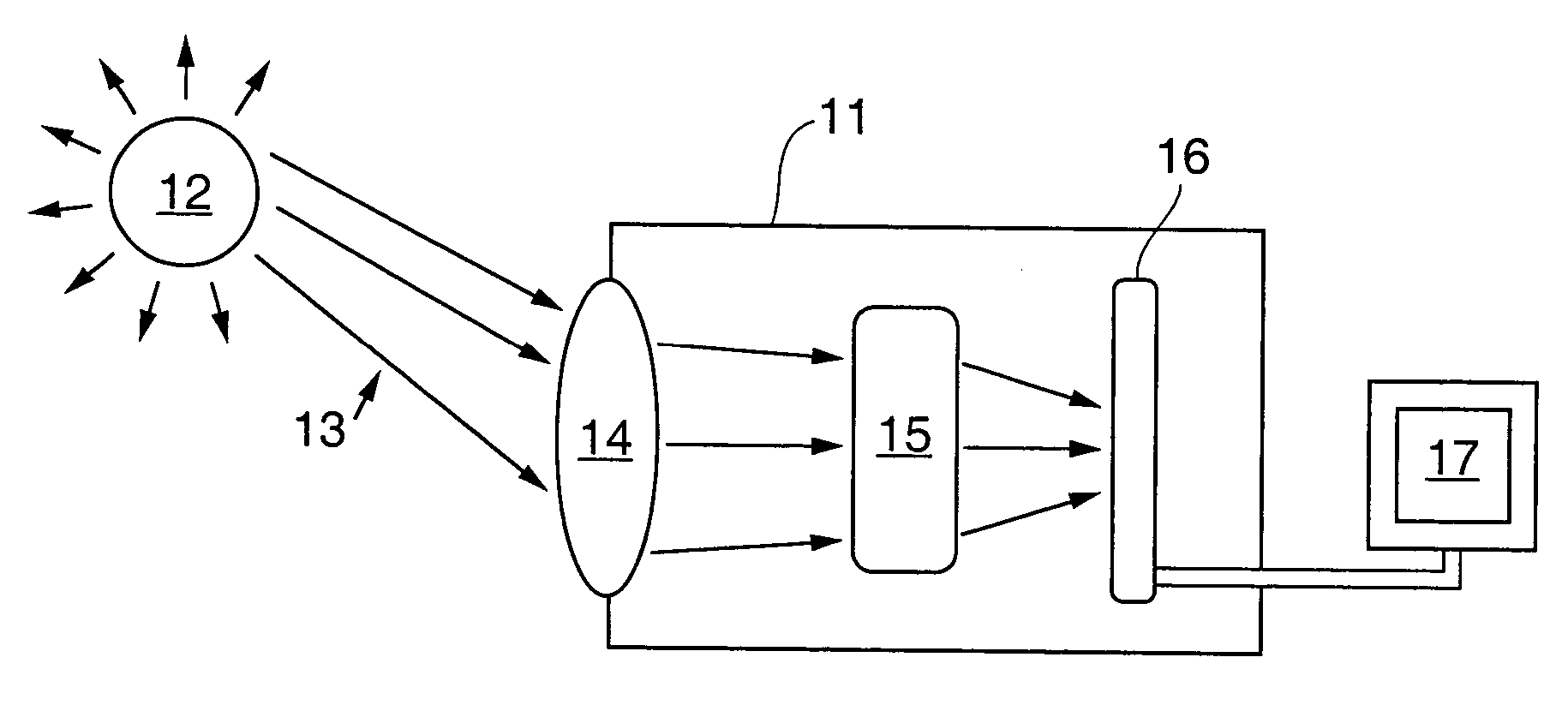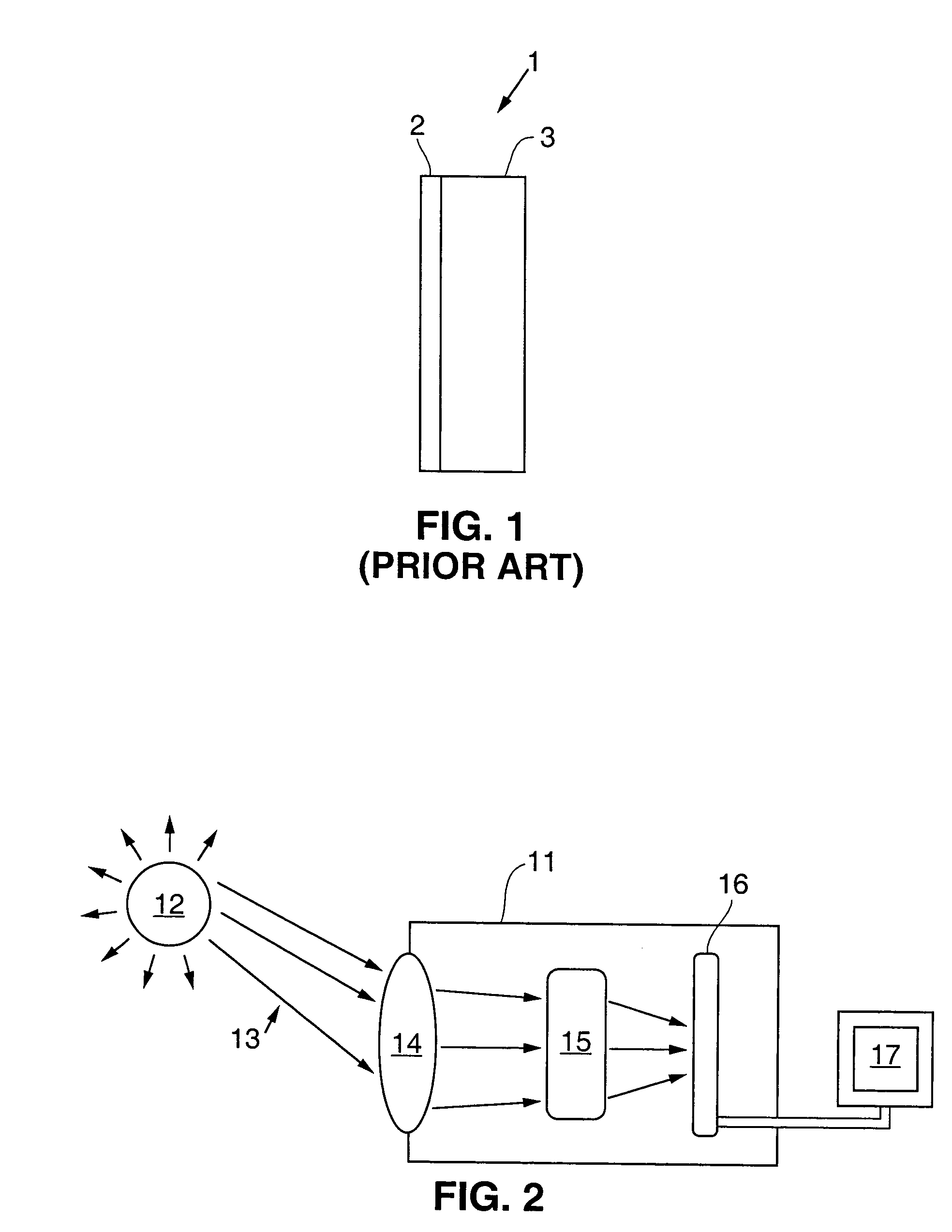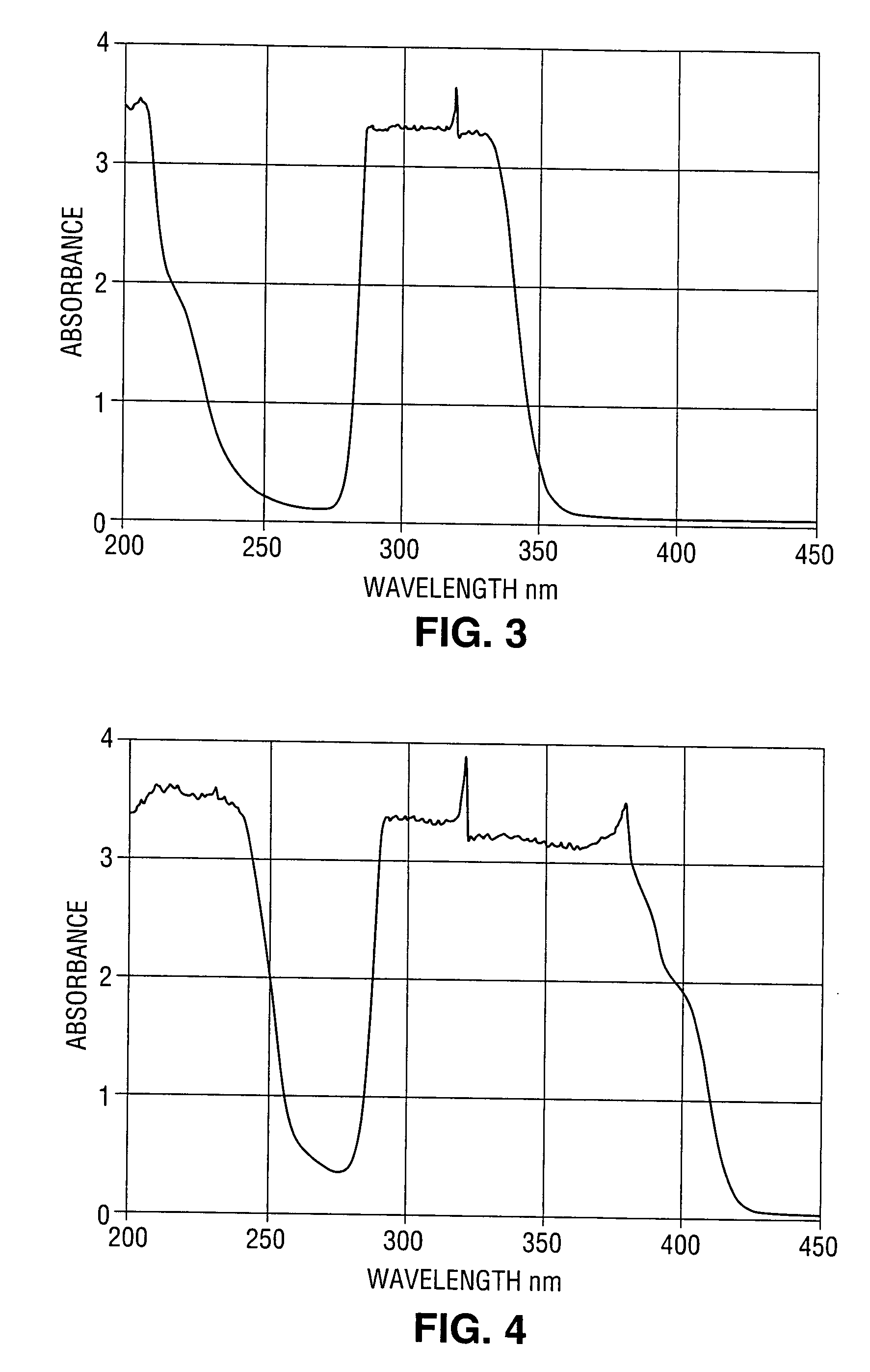Crystalline filters for ultraviolet sensors
a filter material and ultra-violet technology, applied in the field of ultra-violet crystal filter material, can solve the problems of low transmission of organic dye films in the desired band-pass region, deformation of films, and physical damage of organic dye films, and achieve the effect of durable and easy fabrication of optical elements
- Summary
- Abstract
- Description
- Claims
- Application Information
AI Technical Summary
Benefits of technology
Problems solved by technology
Method used
Image
Examples
second embodiment
[0037] In the invention, FMT-2, the mixture includes primarily calcium fluoride (CaF2), which is the host material. The mixture also includes codopants of about 0.01 to about 5.0 mole percent of cerium fluoride (CeF3), about 0.001 to about 1.0 mole percent of cerium nitride (CeN); about 0.01 to about 5.0 mole percent of europium fluoride (EuF3), and about 0.001 to about 1.0 mole percent of europium nitride (EuN). As in FMT-1, the mixture can include inactive components. The inactive components may be included about 0.01 to about 5.0 mole percent of manganese fluoride (MnF2), cobalt fluoride (CoF2), or lead fluoride (PbF2) and about 0.01 to about 20.0 mole percent of sodium fluoride (NaF). The inactive components serve to remove unwanted oxides from the melt and to maximize distribution of the active dopants.
[0038] In one particular embodiment of a mixture to form the FMT-2 crystal filter, the crystal filter is grown from a mixture having primarily, about 12.8075 moles, calcium fluor...
third embodiment
[0040] In a crystal according to the invention, FMT-3, a host material of about 12.8074 moles of Calcium Fluoride (CaF2) powder or broken crystals is mixed with codopants of about 0.25 mole percent cerium fluoride (CeF3) powder and about 0.01 mole percent of cerium carbide (CeC2) powder. In order to remove any unwanted oxides from the starting materials, one or more of about 0.01 to about 5.0 mole percent manganese fluoride (MnF2), about 0.01 to 5.0 mole percent cobalt fluoride (CoF2), and about 0.01 to about 5.0 mole percent of lead fluoride (PbF2) is added to the mixture. About 1.6 mole percent of sodium fluoride (NaF) can also be added to the mixture. In general, the CaF2 and CeF3 are mixed and transferred to an argon dry box where the remainder of the components are added and blended to ensure homogeneity.
[0041] Example Mixture 4 (FMT-4 crystals)
fourth embodiment
[0042] In a filter crystal according to the present invention, FMT-4, a host material of about 12.8074 moles of calcium fluoride (CaF2) powder or broken crystals is mixed with codopants of about 0.30 mole percent cerium fluoride (CeF3). The mixture is transferred into an Argon dry box and about 0.6 mole percent sodium hydroxide (NaOH) is added in order to form the codopant cerium hydroxide (Ce(OH)2) during crystal growth. In order to remove any unwanted oxides from the starting materials, about 0.2 mole percent of lead fluoride (PbF2) is added to the mixture. Additionally, about 1.6 mole percent of sodium fluoride (NaF) is added to the mixture to maximize the distribution coefficients of the constituents.
[0043] One skilled in the art will recognize that other mixtures for forming filter crystals according to the present invention can be formed. Example mixtures 1 through 4 are presented for demonstrative purposes only and are not to be considered limiting. Mixtures for forming filte...
PUM
| Property | Measurement | Unit |
|---|---|---|
| wavelength | aaaaa | aaaaa |
| wavelength | aaaaa | aaaaa |
| wavelengths | aaaaa | aaaaa |
Abstract
Description
Claims
Application Information
 Login to View More
Login to View More - R&D
- Intellectual Property
- Life Sciences
- Materials
- Tech Scout
- Unparalleled Data Quality
- Higher Quality Content
- 60% Fewer Hallucinations
Browse by: Latest US Patents, China's latest patents, Technical Efficacy Thesaurus, Application Domain, Technology Topic, Popular Technical Reports.
© 2025 PatSnap. All rights reserved.Legal|Privacy policy|Modern Slavery Act Transparency Statement|Sitemap|About US| Contact US: help@patsnap.com



